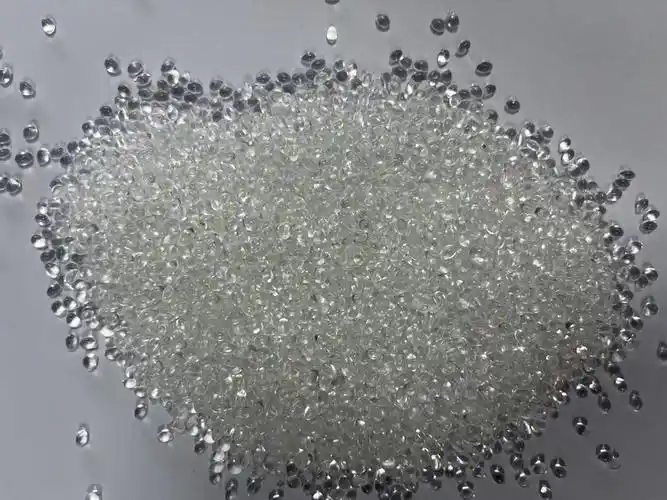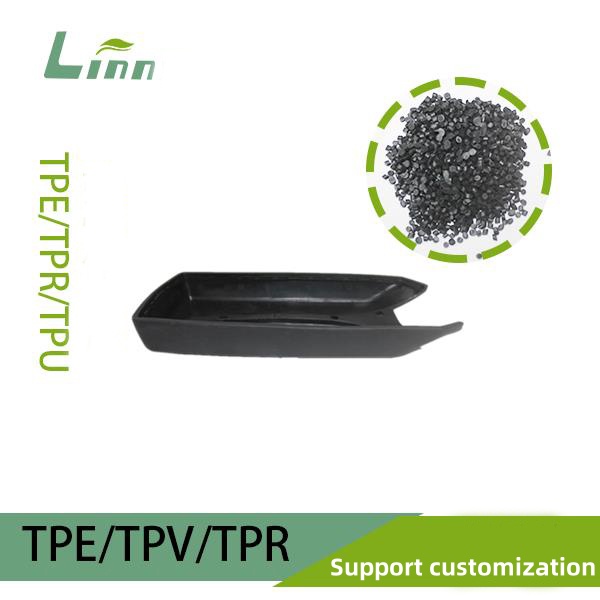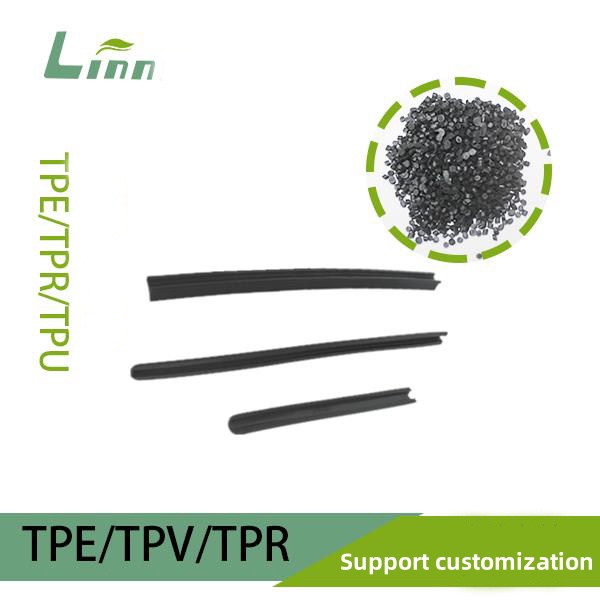As a veteran in the injection molding industry with over a decade of hands-on experience, I’ve spent countless hours tweaking machines to get the perfect part, especially when working with TPE (Thermoplastic Elastomer) soft rubber. TPE is a fantastic material—flexible, durable, and versatile—but it’s also finicky. Setting the right injection molding parameters can mean the difference between a flawless soft-touch grip and a batch of warped, sticky parts. If you’re struggling to dial in your TPE process or just want to avoid costly trial-and-error, I’m here to share the practical know-how I’ve gained from years on the shop floor. Let’s dive into how to set up your injection molding machine for TPE, with tips and tricks to ensure smooth production and high-quality parts.

Why TPE Requires Special Attention
When I first started molding TPE, I underestimated how different it was from rigid plastics like ABS or PP. TPE’s rubber-like properties make it sensitive to temperature, shear, and cooling rates. Get the settings wrong, and you’ll face issues like flash, sink marks, poor adhesion in overmolding, or even degradation. The goal is to balance flow, bonding, and part integrity while keeping cycle times efficient. Whether you’re molding soft grips, seals, or medical components, the following steps, drawn from my experience, will help you nail the process.
Key Parameters for TPE Injection Molding
1. Melt Temperature
Getting the melt temperature right is critical for TPE. Too hot, and you risk degrading the material, causing stickiness or gas marks. Too cold, and you’ll get incomplete filling or poor bonding in overmolding. Most TPE grades have a recommended melt temperature range of 180-220°C, but this varies by grade (e.g., SEBS, TPU, or TPO).
In one project, I was molding TPE grips for power tools and noticed burn marks on the parts. The barrel was set at 230°C, which was too high for the SEBS-based TPE. Dropping it to 195°C, as per the supplier’s data sheet, eliminated the issue and improved surface finish. Always check the technical data sheet from your TPE supplier and use a melt temperature probe to verify actual conditions, as barrel settings can be deceptive.
2. Mold Temperature
The mold temperature affects cooling rate, surface finish, and part shrinkage. For TPE, I recommend a mold temperature of 20-40°C for most grades. Cooler molds (20-30°C) work well for thin-walled parts, while slightly warmer molds (30-40°C) help with thicker sections or overmolding to ensure good adhesion.
I once worked with a medical device manufacturer molding TPE tubing connectors. They had issues with warping due to a mold temperature of 15°C. Raising it to 35°C reduced internal stresses and improved dimensional stability. If you’re overmolding onto a rigid substrate like PP, a warmer mold can enhance bonding by allowing better molecular interlocking.
3. Injection Speed
TPE is shear-sensitive, so injection speed needs careful adjustment. A moderate to slow injection speed (20-50% of maximum) minimizes shear heating, which can cause degradation or flash. For thin-walled parts or complex geometries, I use a two-stage injection profile: a fast initial fill to ensure flow, followed by a slower pack to avoid over-pressurizing.
In a project for TPE-overmolded phone cases, we had flash issues due to a high injection speed. Switching to a two-stage profile (40% speed for fill, 20% for pack) eliminated flash and improved part consistency. Experiment with speed settings, starting low and increasing gradually while monitoring part quality.

4. Injection Pressure
Injection pressure should be just enough to fill the mold without causing flash or stress. For TPE, I typically start at 50-70% of the machine’s maximum pressure (e.g., 50-100 MPa on a 1000-ton machine). Overmolding requires lower pressure to avoid damaging the substrate, while standalone TPE parts can tolerate slightly higher pressure.
I recall a client molding TPE seals who struggled with incomplete filling. Their pressure was set too low (30 MPa). Increasing it to 60 MPa ensured complete mold fill without flash. Use the minimum pressure necessary to fill the mold, as excessive pressure can cause mold wear or part defects.
5. Holding Pressure and Time
Holding pressure compensates for material shrinkage as the TPE cools, but it’s a balancing act. I set holding pressure at 50-70% of injection pressure and keep holding time short—typically 1-3 seconds for thin parts, up to 5-8 seconds for thicker ones. Too much holding pressure or time can cause flash or distortion, especially in overmolding.
In a project for TPE gaskets, excessive holding pressure (80 MPa) caused flash along the parting line. Reducing it to 40 MPa and shortening the holding time to 2 seconds fixed the issue while maintaining part integrity.
6. Cooling Time
TPE requires sufficient cooling time to solidify without warping or sticking to the mold. I typically set cooling time at 10-20 seconds for thin parts and 20-40 seconds for thicker ones, depending on mold temperature and part geometry. Insufficient cooling can lead to deformation, while excessive cooling slows production.
I helped a factory molding TPE medical grips that were sticking to the mold due to a short cooling time (8 seconds). Extending it to 15 seconds and ensuring a mold temperature of 30°C solved the problem without impacting cycle time significantly.
7. Screw Speed and Back Pressure
TPE is sensitive to shear, so keep screw speed low (20-50 rpm) to avoid overheating. Back pressure should also be minimal—5-10 MPa—to ensure gentle plastication without degrading the material. I’ve found that high screw speeds can cause air entrapment or burning, especially with softer TPE grades.
In one case, a client producing TPE tubing had bubbles in the parts due to a high screw speed (100 rpm). Lowering it to 30 rpm and reducing back pressure to 8 MPa eliminated the issue and improved clarity.
8. Drying Conditions
TPE is hygroscopic, and moisture can cause splay, bubbles, or poor surface finish. I always dry TPE pellets for 2-4 hours at 70-80°C using a desiccant dryer to achieve a moisture content below 0.02%. In humid environments, this step is non-negotiable.
I once worked with a manufacturer who skipped drying, resulting in splay on TPE-overmolded handles. Implementing a strict drying protocol (3 hours at 75°C) resolved the issue and boosted yield by 15%.

Recommended TPE Injection Molding Parameters
Here’s a table summarizing typical parameter ranges for TPE injection molding, based on my experience with various grades and applications:
|
Parameter |
Typical Range |
Best For |
Notes |
|---|---|---|---|
|
Melt Temperature |
180-220°C |
General TPE, overmolding |
Check supplier’s data sheet |
|
Mold Temperature |
20-40°C |
Thin parts, bonding |
Warmer for overmolding adhesion |
|
Injection Speed |
20-50% of max |
Thin/complex parts |
Use two-stage profile if needed |
|
Injection Pressure |
50-100 MPa |
Full mold fill, no flash |
Adjust based on part geometry |
This table is a starting point—always fine-tune based on your specific TPE grade and mold design.
Practical Tips for TPE Injection Molding
Here are some additional tips I’ve picked up over the years to optimize your TPE molding process:
Start with Supplier Guidelines: Always begin with the TPE supplier’s recommended settings for temperature, pressure, and drying. These are tailored to the material’s chemistry and provide a solid baseline.
Use a Low-Shear Screw: TPE benefits from a general-purpose screw with a low compression ratio (2:1 to 2.5:1) to minimize shear heating. I’ve seen this make a big difference in soft TPE grades.
Check Mold Venting: Poor venting can trap air, causing burn marks or splay. Ensure vents are clean and at least 0.02-0.03 mm deep. I’ve fixed many surface defects by improving venting.
Optimize Overmolding Adhesion: For overmolding, ensure the substrate (e.g., PP, ABS) is clean and, if needed, pre-heated (40-60°C) to enhance bonding. I’ve used plasma treatment on substrates to boost adhesion in critical applications.
Monitor Cycle Consistency: Use a process monitoring system to track parameters like injection pressure and cycle time. Inconsistent cycles can lead to defects like sink marks or flash.
Clean the Machine Thoroughly: TPE can pick up residues from previous materials (e.g., PP or PE). Purge the barrel with a neutral purging compound before running TPE to avoid contamination.

Real-World Examples from My Experience
To bring this to life, let me share a couple of stories. A few years ago, I consulted for a factory molding TPE seals for automotive windows. They were getting incomplete filling and splay due to undried TPE and a high injection speed. We implemented a drying protocol (3 hours at 80°C) and switched to a two-stage injection profile (30% speed for fill, 15% for pack). The result was a 20% reduction in scrap and perfect seals.
Another time, I helped a startup producing TPE-overmolded fitness tracker bands. Their parts had flash and poor adhesion to the PC substrate. Lowering the melt temperature to 190°C, raising the mold temperature to 35°C, and reducing holding pressure to 50% of injection pressure fixed both issues. The bands passed quality checks and hit the market on time.
Troubleshooting Common TPE Molding Issues
If you’re still seeing defects after setting parameters, here’s a quick guide to common issues and fixes:
Flash: Reduce injection pressure, holding pressure, or mold clamp force. Check for mold wear or misalignment.
Sink Marks: Increase holding pressure or time slightly. Ensure adequate cooling time.
Splay or Bubbles: Dry TPE thoroughly and reduce screw speed to prevent air entrapment.
Poor Adhesion in Overmolding: Increase mold temperature, pre-heat the substrate, or use a TPE grade optimized for bonding to your substrate.
Looking Ahead: Trends in TPE Molding
The TPE molding industry is evolving, and I’m excited about innovations that make parameter setting easier. Smart injection molding machines with real-time feedback can now adjust temperatures and pressures automatically, reducing trial-and-error. New high-flow TPE grades are also emerging, designed for easier processing and better surface finish. Staying updated on these advancements can give your operation an edge.

Wrapping Up
Setting injection molding parameters for TPE soft rubber is a blend of science and art, but with the right approach, you can achieve consistent, high-quality parts. By carefully controlling melt temperature, mold temperature, injection speed, pressure, and cooling, and paying attention to drying and screw design, you’ll avoid common pitfalls like flash, splay, or poor adhesion. My years in the industry have taught me that starting with supplier guidelines, testing incrementally, and monitoring results closely are the keys to success. If you’re new to TPE or struggling with defects, don’t get discouraged—reach out to your material supplier or a molding expert, and use the steps above to dial in your process. With patience and precision, you’ll be molding flawless TPE parts in no time.
Related Questions and Answers
Q: How do I know if my TPE is properly dried?
A: Check for splay or bubbles in the parts. Use a moisture analyzer to confirm the TPE’s moisture content is below 0.02%. If in doubt, dry for 2-4 hours at 70-80°C in a desiccant dryer.
Q: Can I use the same machine settings for different TPE grades?
A: Not usually. Each TPE grade (e.g., SEBS, TPU) has unique flow and thermal properties. Always consult the supplier’s data sheet and adjust melt temperature, pressure, and cooling accordingly.
Q: Why is my TPE sticking to the mold?
A: Sticking can result from insufficient cooling time, high mold temperature, or lack of mold release. Extend cooling time, lower mold temperature to 20-30°C, or use a light mold release agent.
Q: How do I improve adhesion in TPE overmolding?
A: Use a TPE grade designed for your substrate, increase mold temperature (30-40°C), and consider pre-heating or plasma-treating the substrate for better bonding.
Q: What’s the best way to clean TPE residue from the barrel?
A: Purge the barrel with a neutral purging compound at the TPE’s processing temperature. Follow with a few shots of a high-flow PP to ensure no residue remains.





